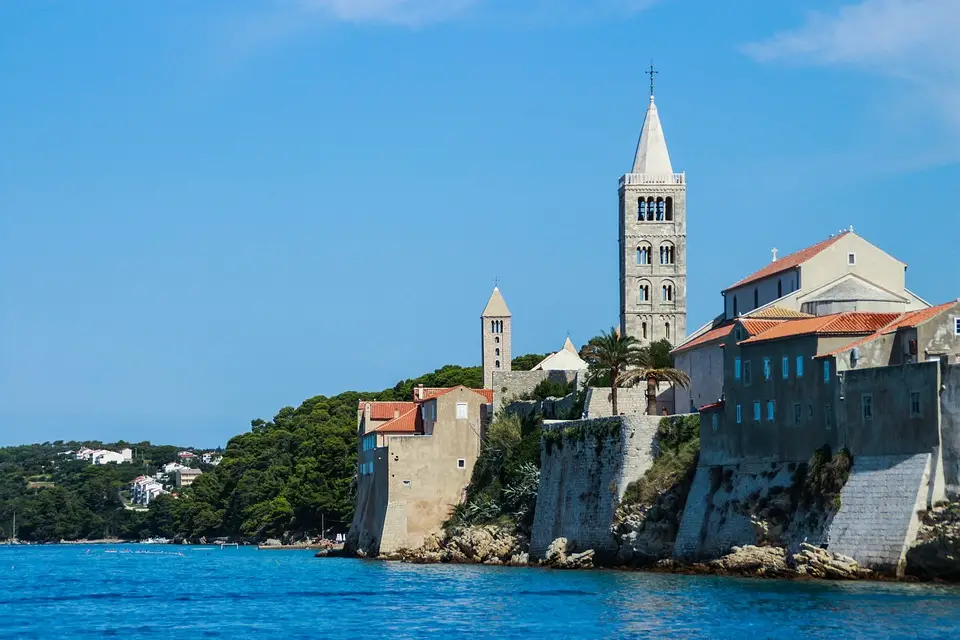As Poslovni Dnevnik writes, despite the fact that the City of Dubrovnik and other parts of the extreme south of Dalmatia get more attention than the north of the Adriatic does, it is precisely up noth that you can find some of the most beautiful regions in all of Croatia. The Istrian peninsula, the Kvarner coastline and the surrounding islands reveal a different side of endlessly rich Croatian culture and history.
These parts of the Croatian coast offer visitors so much history – traces left behind by the ancient Greeks, the Romans, the Venetian and Austro-Hungarian Empires, and Italy. All of them influenced the architecture, language and gastronomy of this part of the Croatian coast, as reported by CNN.
Truffles, olive oil, wonderful juicy clams and mussels in Istria, lobsters in Kvarner, lamb from the island of Cres which is full of flavour… All of these delights pair fantastically with Istrian wine, as well as wine from the island of Krk.
If you aren’t planning to explore ancient Roman ruins, Venetian villages or Habsburg cities, you can enjoy hundreds of parts of the long Istrian coast, the Opatija Riviera or Kvarner. After that, you can visit the islands of Krk, Cres, Losinj and Rab by ferry, CNN recommends to its loyal readers.
Istria
Tourists who visit the heart-shaped coast of the Istrian peninsula might wonder if they accidentally wandered into neighbouring Italy. Throughout its long history, Istria was part of the Roman, Venetian and Habsburg empires, and their legacy is visible absolutely everywhere.
In Pula, visitors can admire one of the best-preserved Roman amphitheatres in the entire world, and on the west coast sits the impossibly beautiful Rovinj. If you move away from the coastline, you’ll find medieval villages, vineyards and forests full of hidden truffles. Above the vineyards rises the medieval town of Motovun, from where you can quickly reach Groznjan, where tourists can visit many open-air summer concerts. One of the most attractive ways to explore Istria is by hiking or cycling in Parenzana.
Opatija
When the Habsburgs discovered the mild climate of Opatija back during the 19th century, they turned that previously small fishing village into the cradle of Croatian tourism. Pastel Belle Epoque-style houses were soon built, and many of them became large hotels.
This elegant town can be seen from Angiolina Park, where the Croatian Museum of Tourism is located today. A walk along Lungomare – a promenade over eight kilometres long, is a great pleasure.
Rijeka
The largest Croatian port is not only a point for ferries to reach the surrounding islands. This cosmopolitan city – the European Capital of Culture back in 2020 – is worth a more honest visit. Korzo is the main part of the city, intended only for pedestrians, where you can walk past the Habsburg houses and drink coffee on one of the cafe’s terraces.
If you want to travel even further back into history, climb the 528 steps to Trsat, a fortress from the 13th century with a view over the entire city and islands.
Krk
Along with the island of Cres, Krk is the largest Croatian island, connected to the mainland by a long bridge. Many tourists visit Baska in the south of the island, but Krk is full of beaches. The village of Vrbnik is a place where you can taste Zlahtina, white wine from Krk.
The City of Krk, which is also the largest settlement on the island, reveals the complex history of the region with its old town, which is home to a medieval fortress, a Roman monastery and Venetian houses with narrow alleys winding through it all. Look for the paths that can lead you to some hidden beaches.
Cres
The long and thin island of Cres winds around the western coast of Krk. It is a relatively untouched part of the Adriatic where sheep roam freely through the pastures. Here you can taste one of the most delicious cuts of lamb in all of Croatia. There are only a handful of settlements on Cres, including the small Venetian town of Cres or the much smaller Roman town of Osor.
This is a sleepy place, full of quiet pebbly coves, a small lake and, surprisingly, a vulture reserve. When you get tired of relaxing on the beaches in Valun or Lubenice, you can explore the almost 80 kilometres of hiking trails that will allow you to discover the wilderness of the interior of the island, as well as the enchanting beauty of the coast.
Losinj
Connected to the southwestern part of Cres by a suspension bridge, Losinj may not be that easy to get to, but it’s definitely worth going. Full of wild plants, Losinj is a soothing and fragrant place, which you will discover by walking along the paths hidden among the pine trees.
Rab
The second royal dynasty made the island of Rab famous. Back in 1936, the unsuspecting British King Edward VIII and his lover at the time, and later wife Wallis Simpson, bathed naked in the waters of the Frknja peninsula and thus started a tradition of nudist beaches that has never disappeared.
There are at least twenty sandy beaches on this small island – which is quite a lot when you consider that you’re in a country dominated by rocky and pebble bays. You can go hiking in Lopar and right there you will find some of the most beautiful beaches of all. It isn’t only the crystal clear waters of Rab that delight blue-blooded tourists. The beautiful and fantastically preserved medieval architecture of the city of Rab is equally enchanting.
For more international coverage of the glorious and rich Croatian coast, make sure to check out our news section.











